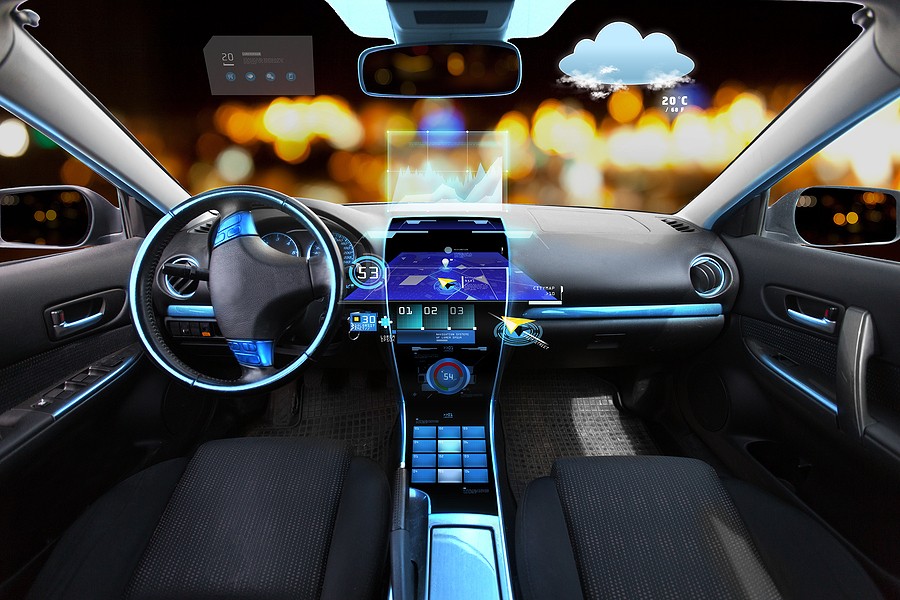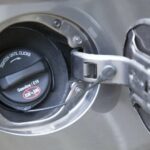Imagine you’re driving and suddenly your dashboard illuminates with warning lights. In modern vehicles, this often points to a sensor issue. These critical components are the unsung heroes of your car, constantly monitoring everything from tire pressure to engine health, ensuring optimal performance and safety. But what happens when these sensors malfunction? This article delves into the world of automotive sensors, exploring their types, common causes of failure, and, most importantly, how to address and fix sensor issues to keep your vehicle running smoothly.
 Car Sensor Repair and Replacement in Indianapolis Indiana
Car Sensor Repair and Replacement in Indianapolis Indiana
Decoding Common Car Sensor Types and Functions
Modern cars are equipped with a network of sensors, each playing a vital role in specific systems. Understanding these sensors is the first step in addressing “Fixed Sensor For Cars” effectively.
Engine Control Unit (ECU) Sensors: The Engine’s Nervous System
The Engine Control Unit (ECU) is the central processing unit of your vehicle’s engine. It relies on a variety of sensors to optimize engine performance, fuel efficiency, and emissions. Key ECU sensors include:
- Oxygen Sensors: These sensors measure the oxygen levels in the exhaust gases. This data is crucial for the ECU to adjust the air-fuel mixture, ensuring efficient combustion and reducing harmful emissions. Maintaining functional oxygen sensors is key to fuel economy and environmental responsibility.
- Mass Air Flow (MAF) Sensors: MAF sensors measure the volume of air entering the engine. This information is essential for the ECU to calculate the correct amount of fuel to inject for optimal combustion. A faulty MAF sensor can lead to poor engine performance and reduced fuel efficiency.
Tire Pressure Monitoring System (TPMS): Ensuring Safe Inflation
The Tire Pressure Monitoring System (TPMS) is a crucial safety feature. TPMS sensors, located in each wheel, constantly monitor tire pressure. They alert the driver when tire pressure drops below a safe threshold. Maintaining proper tire inflation, thanks to TPMS, improves fuel economy, tire life, and, most importantly, vehicle safety by ensuring optimal handling and braking.
Anti-lock Braking System (ABS) Sensors: Enhancing Braking Safety
Anti-lock Braking System (ABS) sensors are vital for safe braking, especially in emergency situations. Located at each wheel, these sensors monitor wheel speed. If a wheel is about to lock up during braking, the ABS system intervenes to modulate brake pressure, preventing wheel lock-up and maintaining vehicle stability and steering control. Functional ABS sensors are paramount for safe driving, particularly in adverse conditions.
Identifying Sensor Glitches: Causes and Warning Signs
Understanding the common causes of sensor malfunctions is crucial for proactive car maintenance and timely “fixed sensor for cars” solutions.
Environmental Stressors
Harsh environmental conditions can significantly impact sensor reliability.
- Extreme Temperatures: Both extreme heat and cold can stress sensor components, leading to inaccurate readings or failures.
- Moisture and Humidity: Water ingress and high humidity can cause corrosion of sensor connectors and internal components, disrupting electrical signals.
- Road Salt and Debris: Road salt, especially in winter driving conditions, and road debris can corrode and physically damage sensors, particularly those located in exposed areas like wheel speed sensors.
Electrical System Issues
Many sensor problems originate from issues within the vehicle’s electrical system.
- Faulty Wiring: Damaged, frayed, or corroded wiring can interrupt the signal flow between sensors and the ECU, leading to sensor malfunctions.
- Loose Connections: Vibrations and general wear and tear can loosen sensor connectors, resulting in intermittent or complete signal loss.
- Blown Fuses: A blown fuse in the sensor circuit can cut off power supply, causing the sensor to stop functioning.
Natural Wear and Tear
Like any mechanical or electrical component, sensors have a lifespan and are subject to wear and tear over time. As vehicles age, sensors can degrade, leading to less reliable performance and eventual failure. Older vehicles are more prone to sensor issues simply due to the age of their components.
The Ripple Effect: How Sensor Glitches Impact Your Car
Sensor malfunctions can have a cascading effect on vehicle performance and safety, highlighting the importance of “fixed sensor for cars” actions.
Fuel Efficiency Reduction
Malfunctioning oxygen sensors or MAF sensors can disrupt the delicate air-fuel mixture in the engine. This can lead to:
- Rich Mixture (Too much fuel): Wastes fuel, reduces fuel economy, increases emissions, and can damage the catalytic converter over time.
- Lean Mixture (Too little fuel): Can cause engine overheating, damage to engine components, and reduced power.
Compromised Safety Systems
Sensor glitches can directly impact critical safety systems:
- ABS Malfunction: A faulty ABS sensor can disable the ABS system, leading to wheel lock-up during hard braking, increasing stopping distances and potentially causing loss of control.
- TPMS Failure: A malfunctioning TPMS sensor may fail to warn of low tire pressure, leading to unsafe driving conditions, increased risk of tire blowouts, and reduced fuel economy.
Escalating Repair Costs
Ignoring sensor issues can lead to more significant and expensive problems. For example, a prolonged issue with an oxygen sensor causing a rich fuel mixture can lead to catalytic converter failure, a very costly repair. Addressing “fixed sensor for cars” issues promptly prevents more extensive damage and reduces long-term repair expenses.
Diagnosing and Implementing “Fixed Sensor for Cars” Solutions
Diagnosing sensor problems effectively is the first step towards implementing the correct “fixed sensor for cars” strategy.
Utilizing OBD-II Scanners for Diagnostic Trouble Codes (DTCs)
An OBD-II scanner is an invaluable tool for diagnosing sensor issues. By connecting it to your car’s OBD-II port (typically located under the dashboard), you can:
- Retrieve Diagnostic Trouble Codes (DTCs): These codes are generated by the ECU when it detects a sensor malfunction. DTCs pinpoint the problematic sensor or system.
- Interpret DTCs: DTCs provide a starting point for diagnosis, indicating which sensor circuit or system is experiencing an issue. Understanding DTCs helps narrow down the potential causes and guides repair efforts.
Performing Visual Inspections for Obvious Issues
A careful visual inspection can often reveal readily apparent sensor problems:
- Check Wiring: Look for damaged, frayed, or corroded wires connected to sensors.
- Inspect Connectors: Ensure sensor connectors are securely plugged in and free from corrosion.
- Examine Sensors for Physical Damage: Look for cracks, breaks, or other physical damage to the sensor housing itself.
Seeking Professional Automotive Expertise
For complex sensor issues or when DIY diagnosis is inconclusive, consulting a qualified mechanic is essential. Professional mechanics possess:
- Specialized Diagnostic Equipment: Beyond basic OBD-II scanners, mechanics have advanced tools for in-depth sensor testing and system analysis.
- Expertise and Experience: Mechanics have the knowledge and experience to accurately diagnose complex sensor problems and recommend appropriate repairs.
- Proper Repair Procedures: Ensuring sensors are replaced correctly and systems are properly recalibrated is crucial for long-term reliability.
Preventative Maintenance: Minimizing Sensor Problems
Proactive maintenance is key to minimizing sensor issues and ensuring long-term vehicle reliability, reducing the need for frequent “fixed sensor for cars” interventions.
Regular Sensor Inspections
Routine vehicle inspections should include sensor checks. During scheduled maintenance, mechanics should:
- Visually Inspect Sensors and Wiring: Look for signs of damage, corrosion, or wear.
- Check Sensor Connections: Ensure connectors are secure and clean.
- Monitor Sensor Performance (if possible with diagnostic tools): Some advanced diagnostic checks can monitor sensor readings and identify potential issues before they become critical.
Keeping Sensors Clean
Maintaining sensor cleanliness can prevent malfunctions caused by dirt and debris buildup.
- Clean MAF Sensors (when appropriate and with care): Special MAF sensor cleaners can be used to remove contamination, improving sensor accuracy.
- Ensure Sensor Areas are Free from Debris: Regularly cleaning engine bays and undercarriage areas can help prevent debris buildup around sensors.
Timely Sensor Replacements
Following recommended sensor replacement intervals can prevent unexpected failures.
- Consult Vehicle Manual: Your vehicle’s owner’s manual may provide recommended replacement intervals for certain sensors.
- Consider Proactive Replacement Based on Age/Mileage: For older vehicles, proactively replacing critical sensors like oxygen sensors or MAF sensors based on mileage or age can prevent breakdowns.
The Future of Car Sensor Technology
Automotive sensor technology is constantly evolving, promising even more advanced and reliable systems in the future.
Advancements in Artificial Intelligence (AI) and Machine Learning (ML)
AI and ML are poised to revolutionize sensor technology:
- Enhanced Sensor Accuracy and Reliability: AI-powered sensors can learn from data, improving their accuracy and reducing false readings.
- Predictive Maintenance Capabilities: AI and ML can analyze sensor data to predict potential sensor failures, allowing for proactive maintenance and preventing breakdowns.
Integration with the Internet of Things (IoT)
IoT integration will create interconnected vehicle systems:
- Real-Time Data Sharing: Sensors will communicate with each other and external networks, providing real-time data on traffic conditions, road hazards, and vehicle health.
- Improved Safety and Efficiency: IoT-enabled sensors will contribute to smarter and safer driving experiences through features like adaptive cruise control and predictive safety systems.
Enhanced Driver-Assistance Systems (ADAS)
Future sensor technologies will drive advancements in ADAS:
- More Sophisticated Safety Features: Improved sensors will enable more advanced ADAS features like lane keeping assist, automatic emergency braking, and enhanced adaptive cruise control.
- Towards Autonomous Driving: Advanced sensor suites are fundamental to the development of self-driving vehicles, providing the crucial perception data needed for autonomous navigation.
Conclusion
Sensor glitches in cars can be frustrating, but understanding their function, causes, and fixes empowers car owners to maintain their vehicles effectively. Regular maintenance, proactive inspections, and timely repairs are essential for ensuring sensor reliability and overall vehicle health. When faced with sensor issues, remember that professional help is readily available to provide expert diagnosis and “fixed sensor for cars” solutions. By staying informed and proactive, you can enjoy a safer, more efficient, and more reliable driving experience.
For expert automotive service and sensor diagnostics, consult a certified mechanic to ensure your vehicle is in optimal condition.
